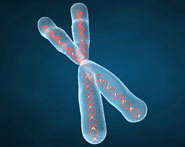


 النبات
النبات
 الحيوان
الحيوان
 الأحياء المجهرية
الأحياء المجهرية
 علم الأمراض
علم الأمراض
 التقانة الإحيائية
التقانة الإحيائية
 التقنية الحيوية المكروبية
التقنية الحيوية المكروبية
 التقنية الحياتية النانوية
التقنية الحياتية النانوية
 علم الأجنة
علم الأجنة
 الأحياء الجزيئي
الأحياء الجزيئي
 علم وظائف الأعضاء
علم وظائف الأعضاء
 الغدد
الغدد
 المضادات الحيوية
المضادات الحيوية|
Read More
Date: 2025-03-26
Date: 25-2-2016
Date: 24-2-2016
|
Definition
• Glomerulopathy caused by subepithelial (between the podocyte and glomerular basement membrane) immune complex deposition.
Epidemiology
• Most common primary renal cause of nephrotic syndrome in adults, except in patients of African origin or ancestry, where APOL1- related FSGS is more common.
Aetiology
• Membranous glomerulonephritis (GN) has historically been divided into ‘primary’ (an autoimmune disease characterized by autoantibodies against podocyte antigens) and ‘secondary’ (developed in association with malignancies, autoimmunity, drugs, and infections). Many target antibodies have now been described: PLA2R, THSD7A, SEMA3B, NELL- 1, PCDH7, ExT1/ ExT2, and NCAM- 1. Future classifications may rely more on the target antigen involved.
• In primary/ idiopathic membranous GN, the most commonly incriminated antigen is PLA2R (phospholipase A2 type M receptor, a protein expressed in podocytes). Antibodies against PLA2R are found in about 75% of cases of membranous glomerulopathy. The second most frequent antigen is THSD7A (~5% of cases).
• Secondary membranous GN can develop in association with malignancies (in particular, epithelial malignancies), drugs (e.g. captopril, gold, penicillamine), infections (e.g. hepatitis B, syphilis, and malaria), and SLE. In these cases, the immune complexes can form in situ in reaction to ‘planted’ antigens, or are present in the circulation and deposit in the glomeruli. ExT1 and ExT2 antigens, and to a lesser extent NCAM, are more commonly seen in membranous in the context of SLE.
Pathogenesis
• Immune complexes within the subepithelial space injure podocytes and disrupt the normal filtration barrier, causing heavy proteinuria.
Presentation
• Nephrotic syndrome.
Light microscopy
• Glomeruli show thickened, rigid capillary walls.
• Silver staining shows ‘holes’ in the glomerular basement membrane which represent the immune deposits, and ‘spikes’ which represent the glomerular basement membrane reaction to the deposits (Fig. 1(a)).
• More advanced cases may also show glomerular segmental sclerosis and tubulointerstitial fibrosis.
Immunofluorescence
• Granular deposits of IgG and C3 along the capillary walls (Fig. 1(b)).
• If deposits of IgA, IgM, and C1q are also present, then membranous nephropathy secondary to SLE should be considered.
Electron microscopy
• Subepithelial electron- dense immune complex deposits are present with a variable reaction of the adjacent basement membrane, which may surround them (Fig. 1(c)).
• Podocytes show diffuse foot process effacement.
Prognosis
• About one- third of patients develop renal failure requiring renal replacement therapy.
Fig1. Membranous glomerulonephritis. (a) Silver stain showing ‘spikes’ and ‘holes’ (irregularities) along the glomerular capillary walls. (b) Immunoperoxidase staining for IgG showing granular capillary wall staining in brown. (c) Electron microscopy showing subepithelial ‘electron- dense deposits’ (arrows) corresponding to the immune complex deposition (see Plate 22).
Fig2. Crescentic GN: Segmental glomerular necrosis with cellular crescent (jones silver stain). Bowman’s space is filled with/ obliterated by cells and fibrin strands (see Plate 23).



|
|
|
|
التوتر والسرطان.. علماء يحذرون من "صلة خطيرة"
|
|
|
|
|
|
|
مرآة السيارة: مدى دقة عكسها للصورة الصحيحة
|
|
|
|
|
|
|
نحو شراكة وطنية متكاملة.. الأمين العام للعتبة الحسينية يبحث مع وكيل وزارة الخارجية آفاق التعاون المؤسسي
|
|
|